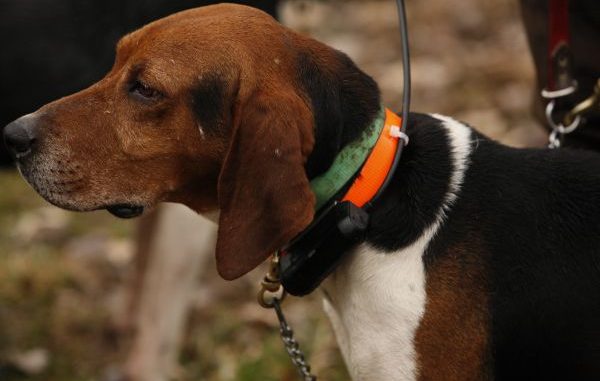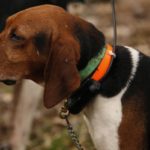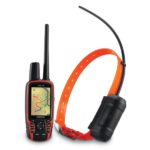
Garmin’s Astro system tracks your hunting dogs with GPS precision
Editor’s Note: Although this product isn’t related to marine electronics, the author ran across this great hunting product.
A few years back I had a scare I don’t ever want to repeat. I was hunting pheasants with Brit, a Brittany I acquired through the PAWS rescue group in Austin, Texas, when she disappeared. We were hunting in grass prairie speckled with islands of tall, dense brush 30 to 50 feet across.We approached each island from downwind, and she crashed into them while I hurried around to the other side. Brit bulled through the tangles in a zigzag pattern, and then popped out near me, usually only a few yards away.
The birds were too skittish to hold for a point and flushed when she got close. I rushed around one extra-large brush patch and waited, but she never came out.
Thinking that she might be on point, I dived into the stuff and searched every foot of the island.
No Brit.
I scanned the surrounding grass, but it was tall enough to hide her unless she was bounding through it. I tried to call and whistle her in with no luck. I started walking, spiraling out from the island while calling and blowing the whistle.
In an hour, I was only a couple of hundred yards from the island and apparently no closer to Brit.
I thought maybe she stepped out of character and went hunting on her own. Dogs tend to naturally hunt upwind, so I started a zigzag search pattern of my own into the breeze and kept it up until I was running out of daylight.
Brit and I had hunted for years without ever getting separated, and I still have no idea what happened that day.
I have never been able to consider my bird dogs as merely valuable pieces of hunting equipment; mine are members of the family. They live in the house, ride in the vehicles and travel with us everywhere. We are bonded.
My walk back to the truck was a somber one filled with thoughts of her out there, somewhere, lost and wondering where in the heck I was. My worries evaporated as I spotted a distant orange and white blob on the ground next to the driver’s door of my truck.
Not long after that event, I got invited on a Montana grouse hunt with Garmin’s Director of Corporate Communications Ted Gartner. He arrived with a few more hunters, a trailer full of dogs and a Garmin product I had never seen work.
My introduction to Garmin’s Astro dog-tracking system on the first morning of our hunt blew any worries about dog loss right out of my future.
Ted powered up the Astro hand unit and the two collars we were about to use. Once they had all acquired the GPS satellites, he put the special collars on the dogs as they came out of their crates. He then made sure he could see both our position and the position of each dog on the Astro’s screen.
Grouse prefer wide-open, hilly country, and dogs have to cover a lot of ground to find them. When a dog got out of sight, a quick look at the screen showed us where it was and whether it was moving or stopped on point.
The collars transmit line-of-sight signals to the Astro hand unit, and have a maximum range of nine miles over flat, unobstructed terrain. A fully-charged collar can run for up to 17 hours while reporting its position every five seconds.
The Astro can even display average-speed and distance-traveled readouts for each dog.
The latest Astro 320 unit ($599.99) comes with one collar but, up to 10 dogs can be tracked with it simply by purchasing extra DC 40 collars ($249.99 each).
Dogs that are outside the screen’s current zoom level have their locations noted in the display’s margin. You can choose how much of each dog’s track (in its own individual color) you want displayed or choose to turn the track logs off for a less-cluttered screen picture. You can also set an alarm to sound when a dog stops moving and goes on point.
Does the Astro concept bring hound hunting to anyone’s mind? I once found a coon hound ambling along a road near Grapevine, Texas. I called the phone number on his collar and got directions to drive him home. He stood across my wife’s lap on the seat of our pickup, head out the window, until he announced to the world that he was home.
An Astro unit would have guided the dog’s owner right to him after the previous night’s hunt.
If I had been using an Astro unit’s dog-finding feature when my dog disappeared, I could simply have selected “Brit” and walked in the direction of the on-screen pointer until I stumbled over her.
I can’t tell you how preferable that would have been, even though everything turned out OK.
Seeing invisible fences
Ted Gartner showed me another way that Garmin handheld and automotive GPS units could boggle my mind.
Here in the southern and southeastern states, land boundaries are generally well marked by fences and signs. The farther west you go, the less of this you see. If you travel out west to hunt on your own, you can run into the problem of not knowing when you leave public land or wander from one piece of private property where you have permission to hunt onto another piece where you don’t.
Ted showed me a tiny micro SD card that you can plug into practically any Garmin unit having a card slot and a color display. The card data puts property boundaries right on your mapping screen, designating the different kinds of public land and showing you the names of the owners of private lands, which can help you get in touch with them for permission to hunt.
The Garmin Nuvi automotive GPS in Ted’s truck plainly showed the boundaries and ownership of the land around us as we cruised the Montana backroads between the public lands he’d previously located and marked. A similar card in his Astro unit warned us when we or the dogs approached a boundary.
You can even sit in your home, office, motel room or truck and use the screen cursor to move around the map to locate and mark these areas ahead of time.
Rather than being Garmin products, these cards carry third-party software compatible with Garmin units. The two types I have used are Hunting GPS Maps and Sportsman’s GPS Maps. Both sell for less than $100, and annual updates are available from both sources at a reduced price.
The first product comes from Montana Mapping & GPS, LLC (http://www.huntinggpsmaps.com/, 208-477-6277) in Missoula, Mont. It is available in versions covering 22 states, with more being added. These cards include a great topo map with well-marked city streets, roads, highways and backroads.
The second product, Sportsman’s GPS Maps, comes from Kirsch’s Outdoor Products (http://www.koutdoorproducts.com/, 701-261-9017) in Fargo, N.D. Versions of this software cover 10 states, and are available for some Lowrance GPS units, too.
Looking at your screen and seeing where you (and your dogs with Astro) are in relation to property boundaries takes a lot of the worry out of hunting new ground.
Still, I’m careful to add a fudge factor to allow for distance errors in case the GPS system or my unit is having a bad day.




